PROTECT YOUR DNA WITH QUANTUM TECHNOLOGY
Orgo-Life the new way to the future Advertising by AdpathwayAdding to their flood of mountain bike drivetrain launches this month, Shimano has another big announcement today: their first-ever fully wireless gravel groupset. It leans heavily on their latest wireless derailleur tech but is a compelling addition to the lineup. Neil has been riding the new Shimano GRX Di2 group for the past month and breaks down everything you need to know in this review, including specs, weights, install tips, highlights, and more…
This is the new 1×12 Shimano GRX Di2—Shimano’s first wireless gravel drivetrain. It borrows a lot from the mountain bike groups we’ve reviewed—Shimano XTR Di2 and XT Di2—but is just as at home on a high-speed gravel race rig. Let’s dig into what’s new and why it matters.
Shimano GRX
If you’re asking, “Didn’t Shimano just launch something last week?” you’re not wrong. In the past three weeks, they’ve rolled out new XTR, XT, and Deore mountain bike drivetrains. As I mentioned in my XTR review, the trickle-down was inevitable, but even I was surprised by how fast it happened. When I found out GRX was coming just a week after XT and Deore, I was honestly shocked.
A quick bit of history: GRX launched right around the peak of the “gravel boom.” Before that, gravel riders were piecing together drivetrains using a mix of road and MTB components. GRX changed the game with things like clutch-equipped derailleurs, gravel-specific lever ergonomics, and gearing optimized for rougher terrain. It started with the mechanical 11-speed RX800 and RX600 groups, followed by the 10-speed RX400, and Di2 versions soon after. GRX later moved to 12-speed with wider-range gearing, and like Dura-Ace and Ultegra, it adopted a semi-wireless setup—with wireless shifters and wired derailleurs running off a central battery.
Now, Shimano has gone fully wireless. So, what’s new? Watch the video review below and read on for specs, details, and parting thoughts.
Shimano GRX Di2: What’s New
Shimano’s goal with the new wireless GRX was simple: make it as cross-compatible as possible. I didn’t dive into this enough in my XTR review because I knew this was coming, but basically, the new GRX system works with all current semi-wireless drop-bar setups. That includes Dura-Ace, Ultegra, 105, and the current-generation GRX 12-speed Di2 levers. If you want to run a mullet setup—or just want to blow your budget on XTR or save money with Deore—you can do that, too.
The only catch is there’s no mid-cage GRX 1×12 Di2 right now, so you’re limited to a 10-51T cassette. But that’s the beauty of this setup: you can mix and match MTB derailleurs with road shifters or even throw shifter buttons in your aero bars—a killer setup for something like the Tour Divide. Sure, you can already do mullet setups with SRAM AXS and Transmission, but I find the Shimano lineup a little simpler to follow.
The new GRX 827 Di2 rear derailleur is essentially an XT derailleur—I don’t think there’s any difference beyond the branding. It’s fully wireless, has standard limit and B-tension screws, a setup/programming button, and its own small battery. Shimano claims a charge will last 435 to 621 miles, depending on how and where you ride.
It uses the new Shadow ES system instead of a traditional clutch, with dual springs for higher tension, better chain wrap, and impact recovery. If you bash the derailleur, it snaps back to the last gear you were in—something the previous version did only after pressing the shift button. It’s super low profile and less likely to get hit (though gravel bikes aren’t immune to singletrack).
It also uses Hyperglide+, so it’s backward compatible with any current Shimano 12-speed Hyperglide+ cassette—XTR, XT, SLX (RIP), and Deore. So, if you already have a cassette and crankset, you’re already saving some cash.
Shimano sent me the older XT M8100 cassette for testing, but technically, this group launches with the new XT M8200 cassette. That one’s a bit lighter and more durable, with more material at the base of some teeth and updated rivets to prevent creaking.
The GRX Hollowtech II crank is unchanged—still offered in 170, 172.5, and 175mm lengths with 40T and 42T ring options. Of course, you can always swap in a different chainring to dial in your gearing.
The wireless Di2 levers launched last year are still here. They’re 2×12 compatible but fully customizable. Each lever has two buttons on the side and one on the top/inside of the hood, giving you six assignable buttons. You can set them up to shift, control lights or bike computers, or even trim the derailleur on the fly.
Shimano also launched a new left lever, the BL-RX825, which is just a brake lever with no electronics. It keeps things simple and drops some weight by ditching the Di2 internals. If you’re running a 1×12 setup, you can save about 19.5 grams and a good chunk of money, all while keeping the same ergonomic feel as the Di2 version. It’s a smart move, though I wish it had an option for a mechanical dropper lever, but I get their “keep it simple” approach here.
Finally, Shimano dropped a surprisingly solid budget wheelset: the RX180. It’s a hooked alloy wheelset with a 25mm internal width, designed for 32–50mm tires. It’s available in both HG and MicroSpline versions and comes in at 2,113 grams with a MicroSpline driver—for just $280. Pretty awesome little package.
Weights
The derailleur weighs 449 grams without the battery and 472 grams with, according to my scale. Shimano claims 454 grams, which I assume is without the battery. Logan’s XT derailleur came in at 471 grams, so I’m guessing the only real difference here is the graphics. For comparison, the GRX derailleur is 58 grams heavier than the XTR version and 82 grams more than the SRAM XO Eagle AXS—but it’s about the same weight as the XO AXS Transmission.
| Cassette | 346 grams | 383 grams | 463 grams |
| Crankset | 568 grams | 760 grams | 646 grams |
| Rear Derailleur | 418 grams | 435 grams | 449 grams |
| Shift-Brake System | 720 grams | 746 grams | 775 grams |
| Chain | 244 grams | 248 grams | 252 grams |
| Rotors | 289 grams | 289 grams | 222 grams |
| Battery | 24 grams | 24 grams | 23 grams |
| Total | 2,610 grams | 2,885 grams | 2,830 grams |
The new cassette has a claimed weight of 463 grams, which is about 7 grams lighter than the old XT cassette and nearly 100 grams heavier than the new XTR cassette. Compared to SRAM, it’s 81 grams heavier than the XO Transmission cassette and 17 grams heavier than the GX Transmission cassette.
The GRX crankset, with 170mm arms and a 42T chainring, weighs in at 646 grams.
Both left and right levers, calipers, and uncut brake lines total 775 grams, with each rotor coming in at 111 grams (not including the Shimano center lock ring). An uncut XT chain weighs 252 grams.
All in, the new parts total around 2,807 grams. That’s a bit more than the new SRAM XPLR Force group and just under the Rival XPLR group that both launched last week—though obviously, they represent two different takes on a gravel/adventure drivetrain.
Shimano GRX Di2 Installation
Now, the XTR group I tested originally came pre-installed on a bike, so after swapping the XTR system a few times, I got a pretty good feel for how everything works—including the trim mode. But installing the GRX system straight out of the box and setting it up from scratch gave me an even better understanding of the proper setup process.
Installation is pretty straightforward, though you’ll need a Microspline driver body, which can be expensive or hard to find for some wheelsets. Once I had the cassette, crank, derailleur, brakes, and levers all in place, I trimmed the chain to spec and bled the brakes. Worth noting: these GRX brakes don’t use the high-viscosity mineral oil found in the new XTR and XT brakes. That’s probably because this isn’t a new brake, but maybe that update is coming.
With everything installed, I started dialing in the shifting. I may be a little out of order compared to Shimano’s official setup steps, but this method worked great for me. I first shifted to the fifth cog—you want to make sure the upper pulley wheel is lined up with it. This requires pulling the cage down by hand (I wish there was a cage lock for this). You can do this with the chain on, but I find it doesn’t provide the most accurate alignment.
If the pulley isn’t perfectly aligned, you can enter trim mode by pressing the button on the derailleur for half a second. From there, use the levers—or whatever shifter setup you’re running—to make micro-adjustments until the pulley lines up with the fifth cog. I had to trim mine about five clicks toward the larger cogs. Once it was dialed, I pressed the derailleur button again to return to normal shift mode.
Then I installed the chain, checked the limit screws, and adjusted the B-tension. Shimano includes indicator marks on the back of the derailleur cage, which makes this step way easier than using a separate B-tension tool like SRAM requires.
If you saw my XTR video, I mentioned you can also do the trim process via Shimano’s app—and that still applies to all of the Di2 systems. In fact, using your phone can make the process even easier since you can crouch down behind the derailleur and tweak it in real time.
I’d say the whole setup process isn’t quite as fast as SRAM’s Transmission system and feels different from setting up a mechanical drivetrain, but once you get used to it, the trim method works like a virtual barrel adjuster. It gives the system a surprisingly mechanical feel overall.
In Use
Shifting this system—like with the XTR setup—is wild. It’s the fastest electronic shifting out there, hands down. Sure, some folks will claim friction shifters are faster, but let’s be real: I’ve tried friction shifters on drop bars, and they’re not exactly quick. There’s a time and place for them, and I totally get not wanting to mess with batteries, so if that’s your thing, this system probably isn’t for you. But if you’re into electronic shifting, Shimano’s new Di2 is seriously impressive.
My past experience with GRX has been solid. I’ve used GRX mechanical for years and spent a lot of time on the Di2 2x setup. In fact, I built up a Cutthroat with GRX back in 2020 to race the Tour Divide again—before the world shut down. I put a ton of miles on that bike, including ultra races and long days in the saddle, and GRX proved to be both reliable and efficient.
While mechanical shifting on newer Shimano groups has improved a lot in terms of lever ergonomics, the ability to just tap a button with Di2—and now shift with just a pinky—really saves your wrists and hands over long days or weeks of riding. That’s honestly one of the biggest benefits of an electronic system, especially if you’re out there pedaling all day, every day.
Now, about gearing: plenty of people will want a 2x version of this system. I even asked if you could pair a front derailleur with the mid-cage, but unfortunately, it just doesn’t work. The max front tooth difference for all the new Di2 derailleurs is zero—so you can’t run a front derailleur at all. That’s going to spark some conversations around gearing and gear steps.
Di2 2x is still available, so if tighter jumps between gears are a priority, that’s your best option with Shimano for now. The tradeoff with the MTB cassette is that you may struggle to find the perfect gear for efficient road spinning—something you always give up with a 1x setup. That said, running a 42T up front gave me a bit more top-end speed, which is always nice for hanging on during fast descents. I’d guess we’ll see an updated Di2 2x at some point, but for now, your options are the older Di2 2x or a mechanical setup.
The new 9-45T cassette with the mid-cage derailleur could be a great match for GRX if you’re looking for maximum top-end speed with a larger chainring. However, Shimano notes you should double-check chainstay clearance with your frame manufacturer just to be safe.
One of the big changes when GRX Di2 launched a few years ago was the hood design, which I already loved. The latest version improves the body shape and cross-section, making it feel even more seamless with flared handlebars. It’s rounder, so the transition from bar to hood is smoother, with more surface area to reduce pressure points. Most hoods are pretty dialed these days, but in my time riding this new setup over the last few weeks, I found myself in the hoods way more than the drops. They just gave me more confidence on descents than the old version. Maybe that’s just me getting more comfortable with drop bars over time, but I really like the feel of the new GRX hoods.
The shift buttons are well-placed, too. The forward button sticks out just enough to easily find and shift quickly. I also think this speaks to the new lever’s pivot point and how easy it is to actuate the brakes from the hoods.
And quickly—just to address the chain slap issue Logan found on the XT derailleur last week: Shimano has always used a bit less tension in their derailleurs. I think that’s part of what makes Hyperglide+ shift as quickly and smoothly as it does. That said, on the XTR or GRX derailleurs, I haven’t really been able to replicate the rebound sound he’s experiencing on the XT system. There’s definitely some chain movement, but I haven’t noticed much chainstay contact.
All in all, as I said with the XTR group, the quick and quiet shifting is a standout feature here. It might not be essential to dump gears rapidly on dirt roads, but it comes in handy sometimes. Many of the routes we cover on BIKEPACKING.com are a mix of singletrack, two-track, dirt roads, and pavement—routes that benefit from a 500%+ gear range, solid durability, and precise, fast shifting.
Shimano GRX Di2 Pricing
As for pricing, the derailleur comes in at $565 USD, and the new XT cassette is $195, which is a relatively great deal—yes, you get a little extra weight, but it’s hard to beat that price compared to SRAM. Here’s a quick comparison.
| Cassette | $305 | $215 | $195 |
| Crankset | $310 | $150 | $280 |
| Derailleur | $475 | $360 | $565 |
| Shift/Brake Lever (left) | $385 | $280 | $345 |
| Shift/Brake Lever (right) | $385 | $280 | $595 |
| Chain | $65 | $50 | $62 |
| Rotors (2) | $110 | $110 | $140 |
| Battery/Charger | $30 | $30 | $100 |
| Total | $2,065 | $1,475 | $2,282 |
I’m sure we’ll eventually see a trickle-down to the 600 series or something similar for a more budget-friendly option—but whether that version will be wireless remains to be seen.
Pros
- Adventure-focused gravel and mixed-terrain gearing
- Cross-compatible with existing Shimano 12-speed mountain or drop-bar drivetrains
- Backward compatible with Hyperglide+ parts
- Smooth, efficient shifting
- Great lever ergonomics + electronic shifting is easier on my hands/wrists
- Three customizable buttons are a nice touch
- Battery is well protected and sealed
Cons
- More expensive than the new SRAM XPLR groups—Di2 levers, in particular, are extremely pricey
- No mechanical left lever for a dropper post
- Missing a cage lock mechanism
- Some might find the 12-speed gear steps a bit large for gravel
- No 2x or mechanical option (yet)
Final Thoughts
Shimano is late to the game here, and they’re not exactly reinventing the wheel—but launching GRX as a mountain bike–esque/adventure group first—with all its cross-compatibility, simple options like the left brake lever, and an overall straightforward setup makes a lot of sense. Not to mention the future trickle-down components that will also be compatible with this setup. This feels like just the beginning for the GRX lineup and drop-bar wireless Di2 integration, and the fact that they started with this system says a lot.
It’s a drivetrain for the people. It’s not strictly for racing, but it absolutely could be. It’s designed for adventure, easy to mix and match, and versatile enough for just about any kind of riding. Plus, its refined ergonomics, lightning-fast shifting, and customizable levers give riders a comfortable, adaptable drivetrain experience.
Looking back, I probably should’ve gone with just the right lever with electronics and the simpler left brake lever. That said, there’s still part of me holding out hope for a future 2x system—or even some kind of dropper post integration with Fox, if and when they finally release a 27.2 short-travel Fox Transfer or Neo dropper.
Further Reading
Make sure to dig into these related articles for more info...
Please keep the conversation civil, constructive, and inclusive, or your comment will be removed.



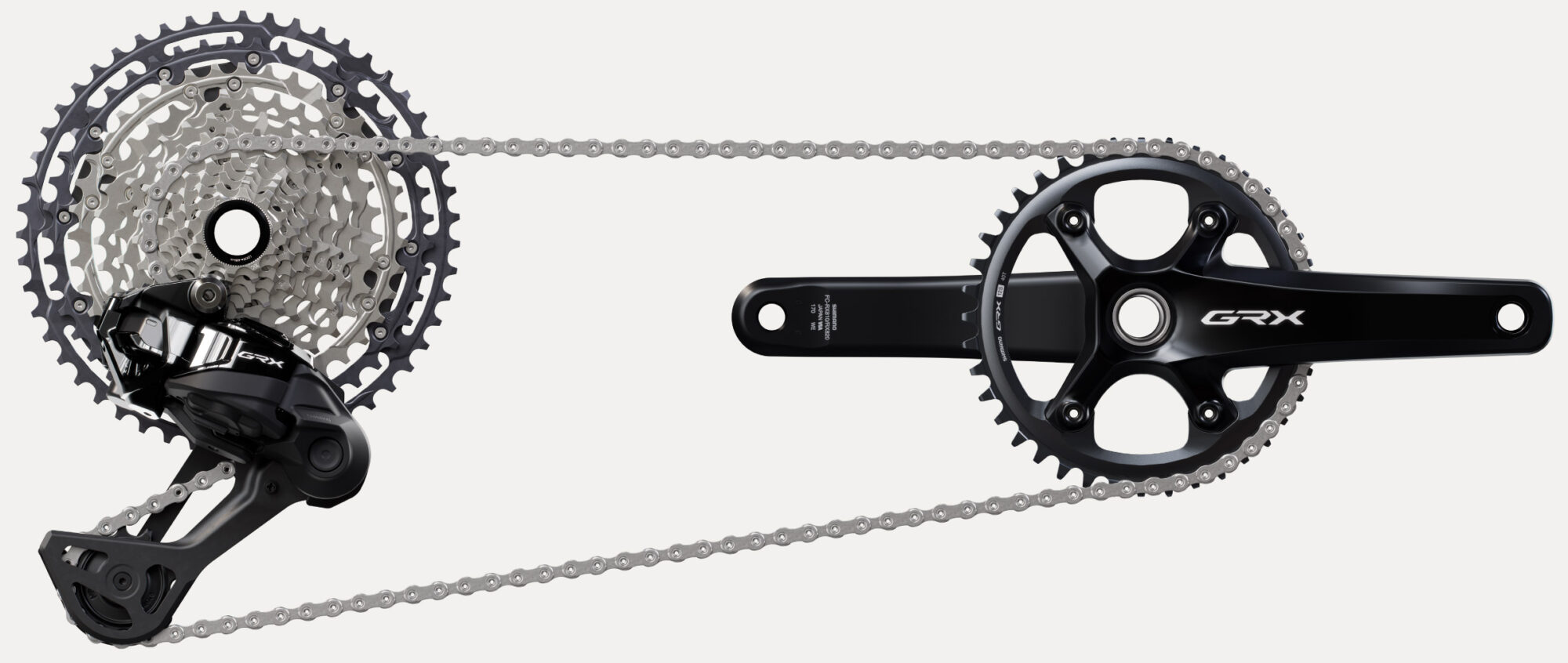
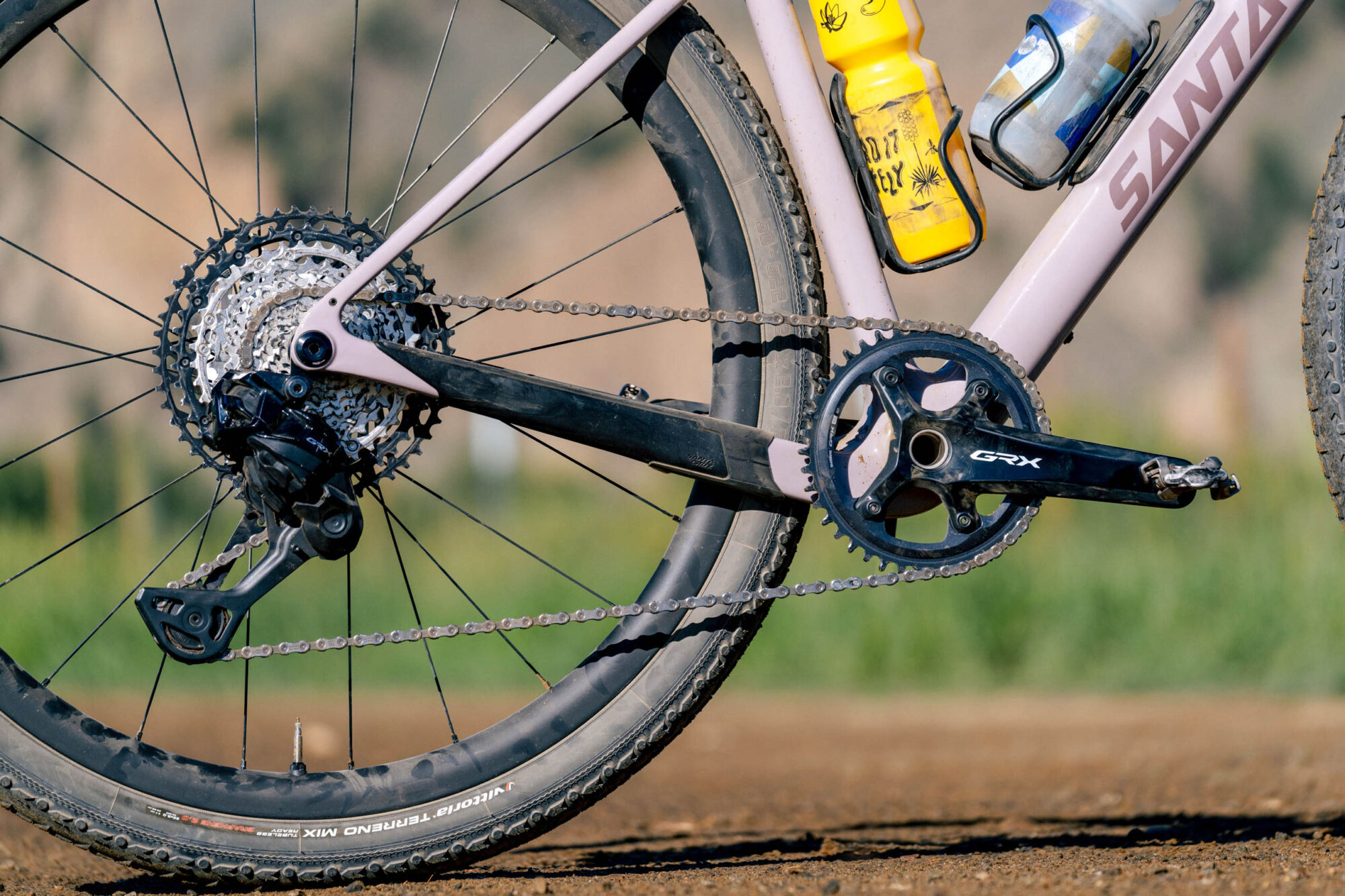
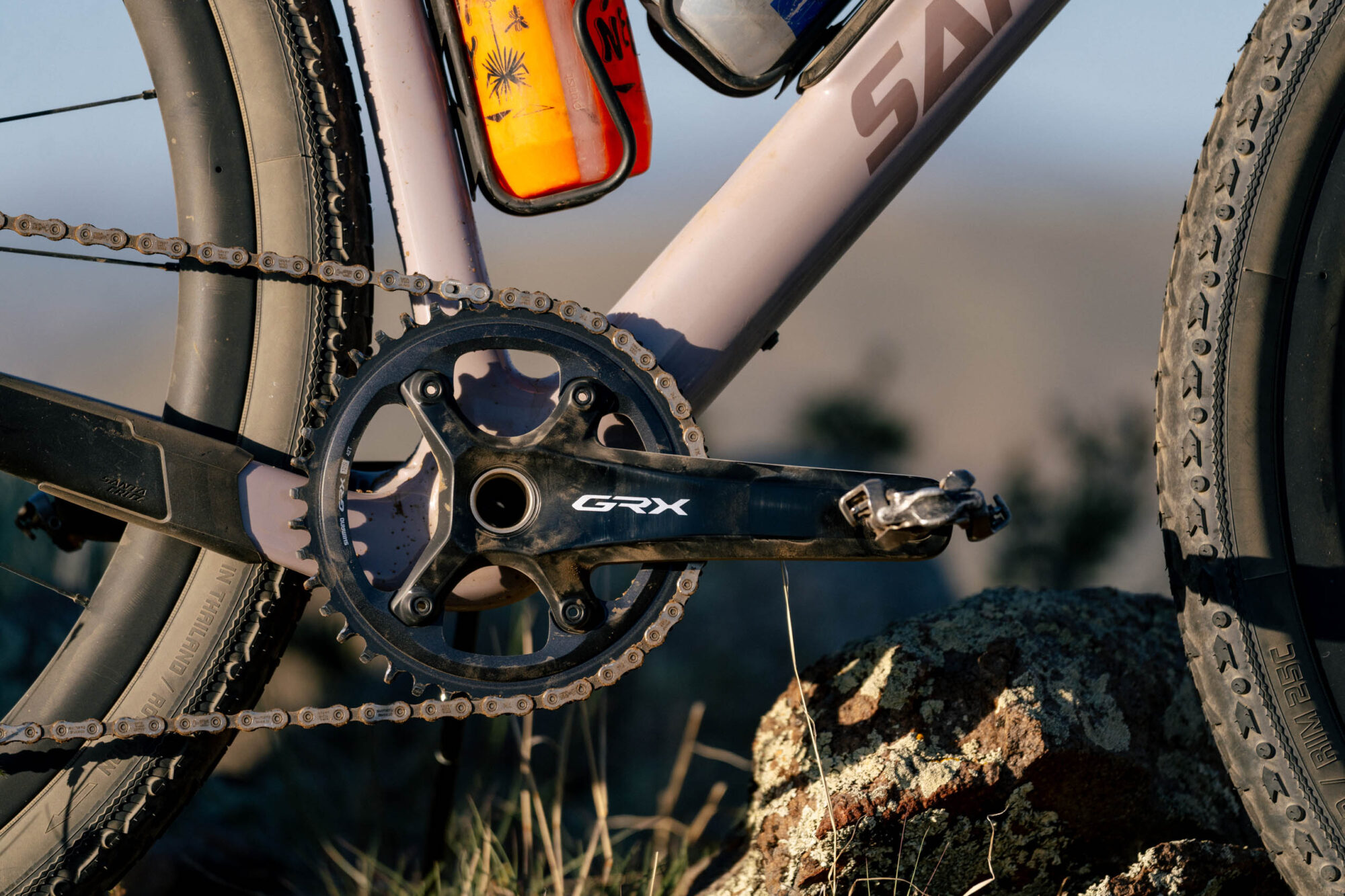


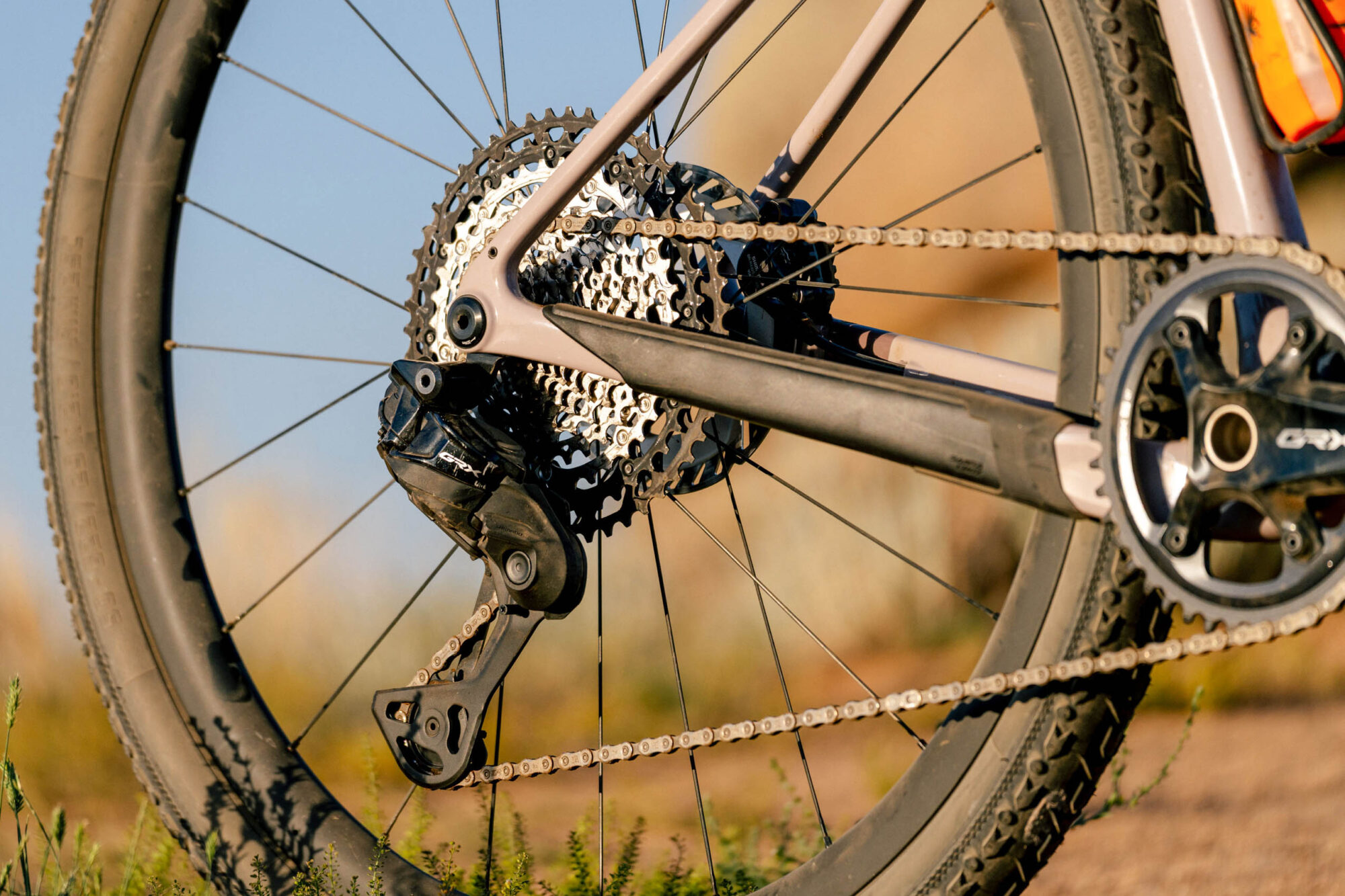
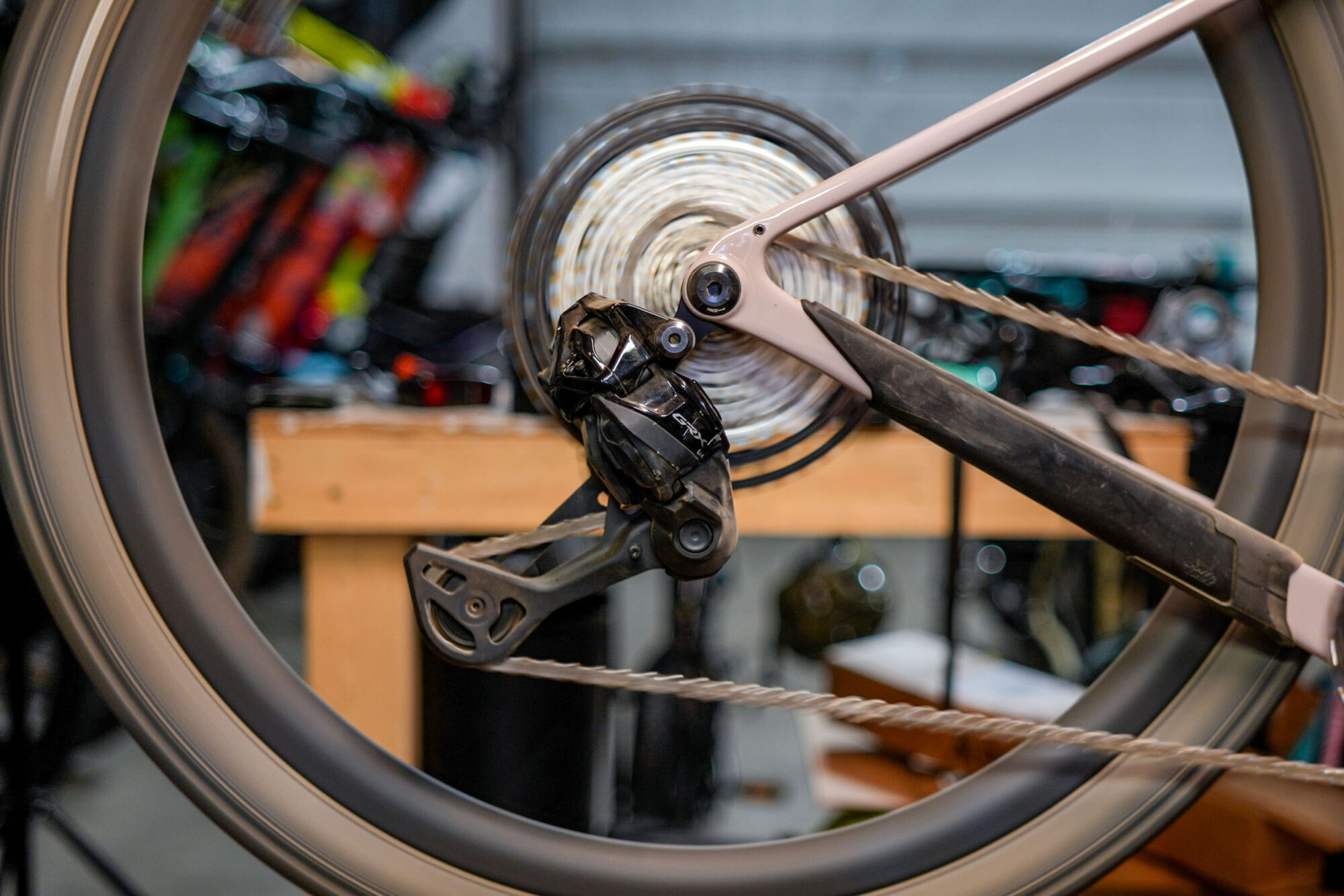

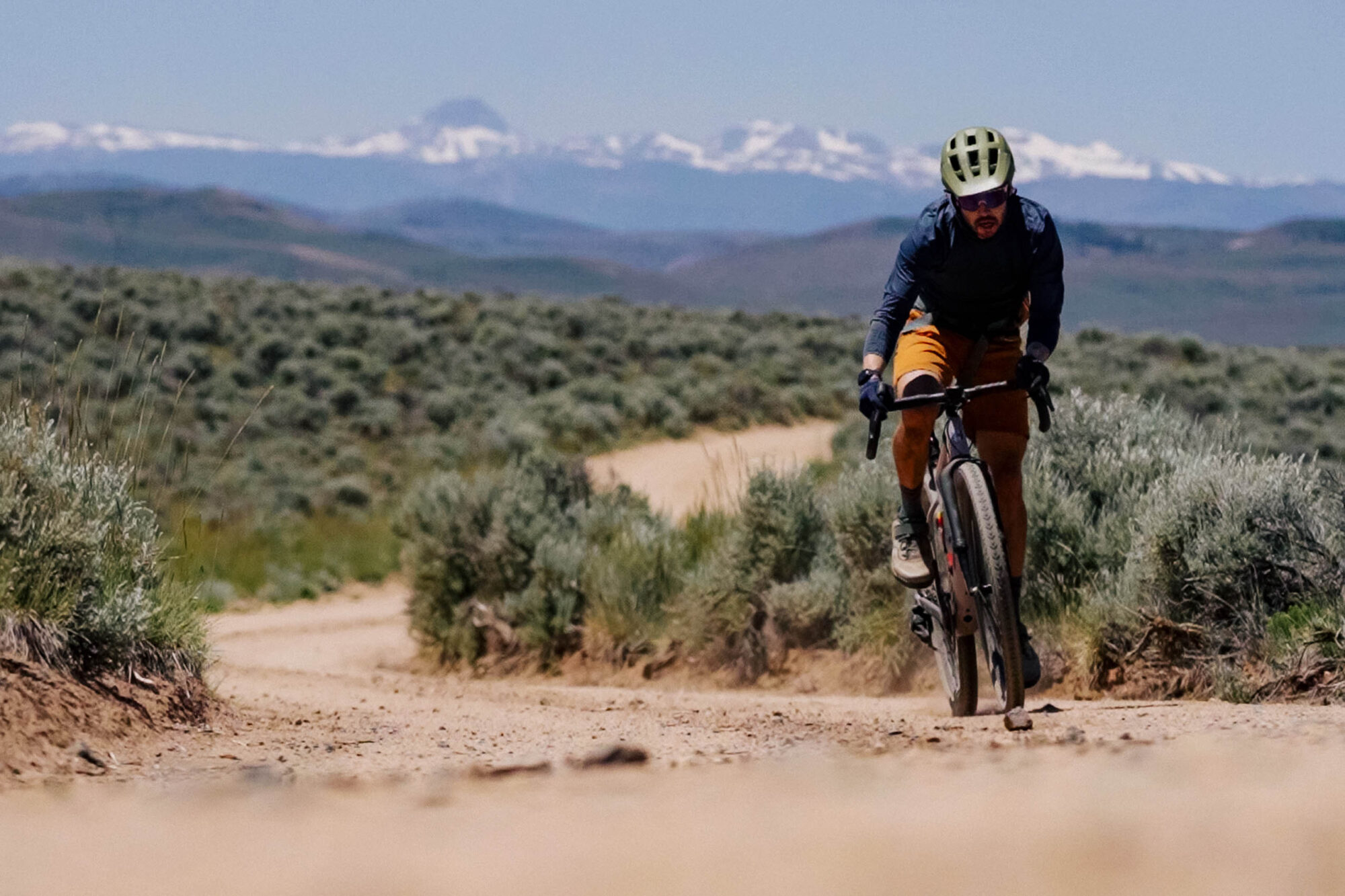
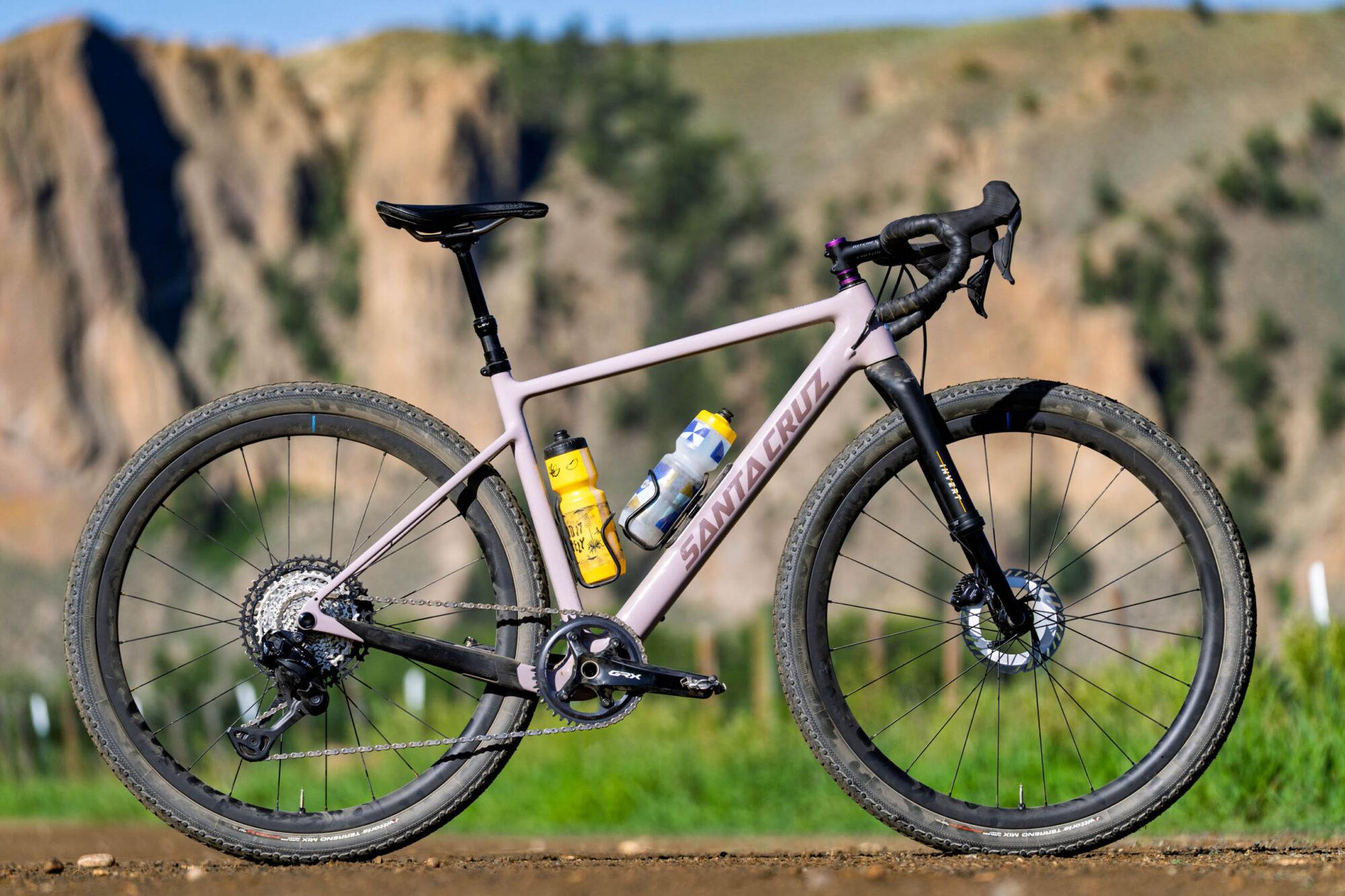

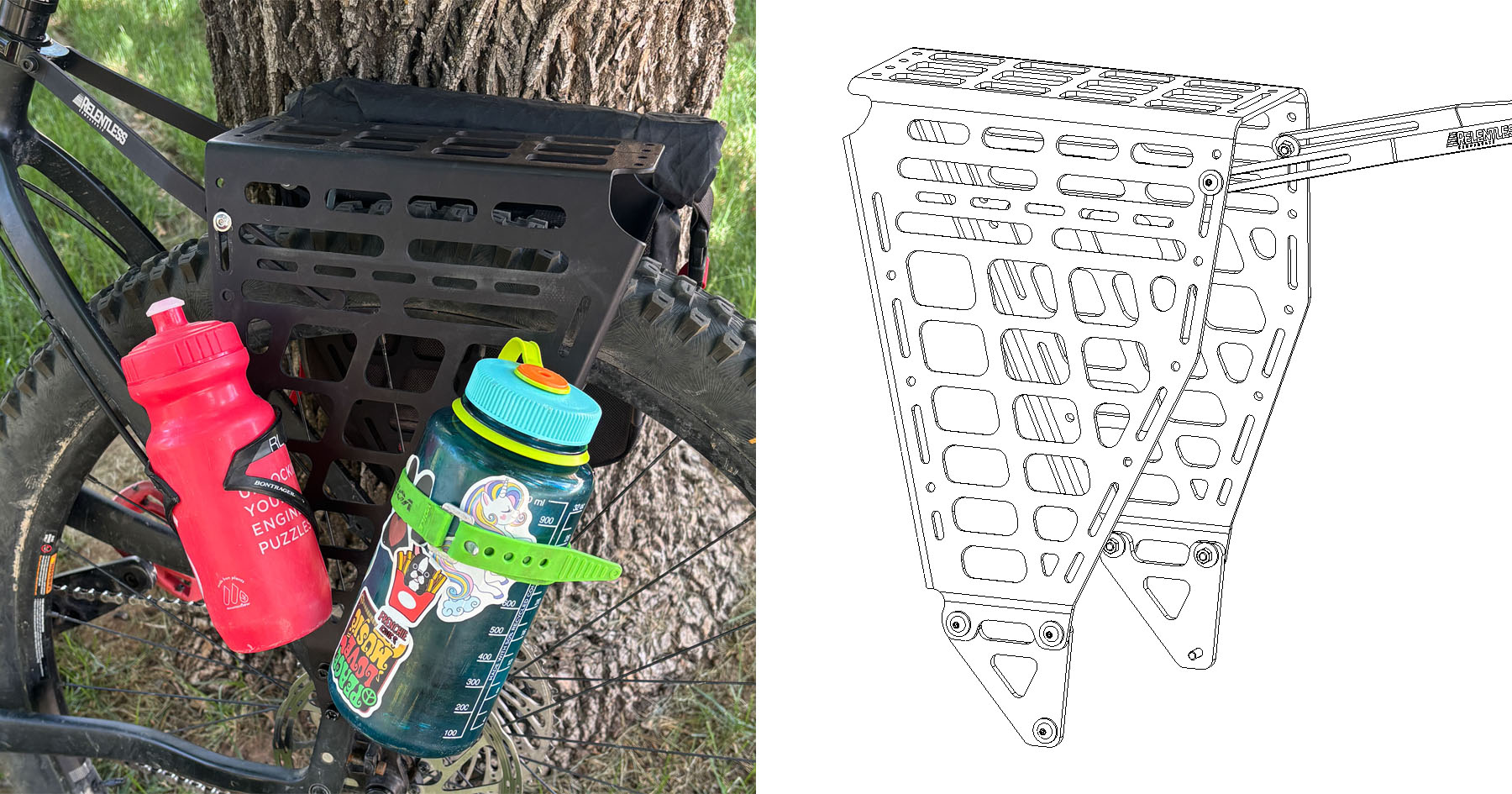















 English (US) ·
English (US) ·  French (CA) ·
French (CA) ·